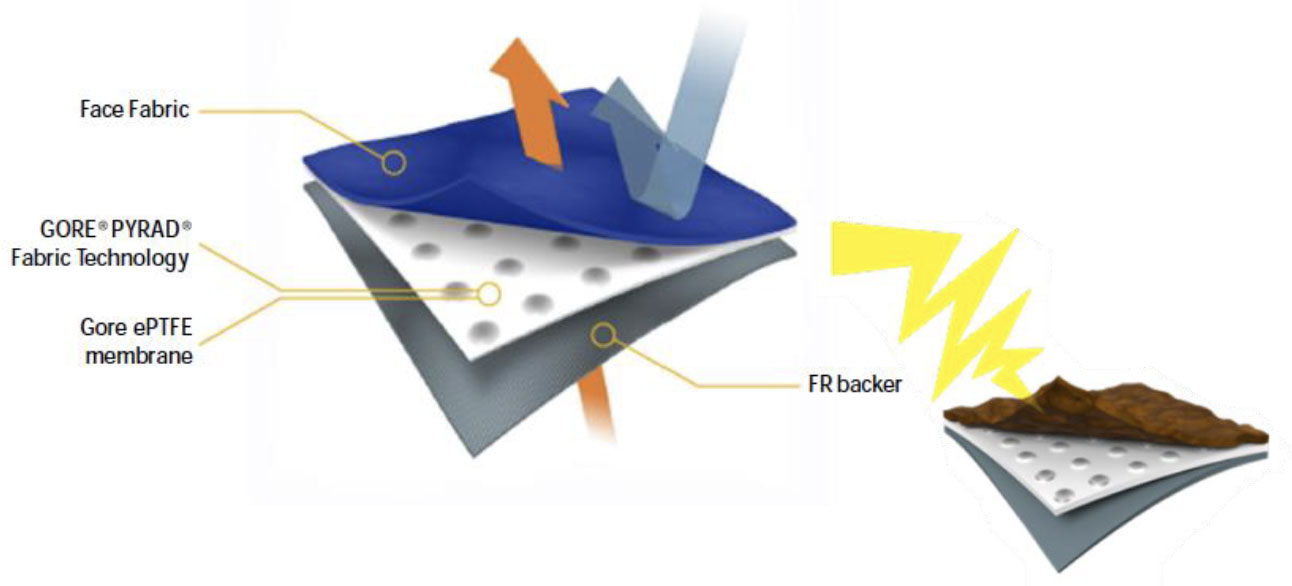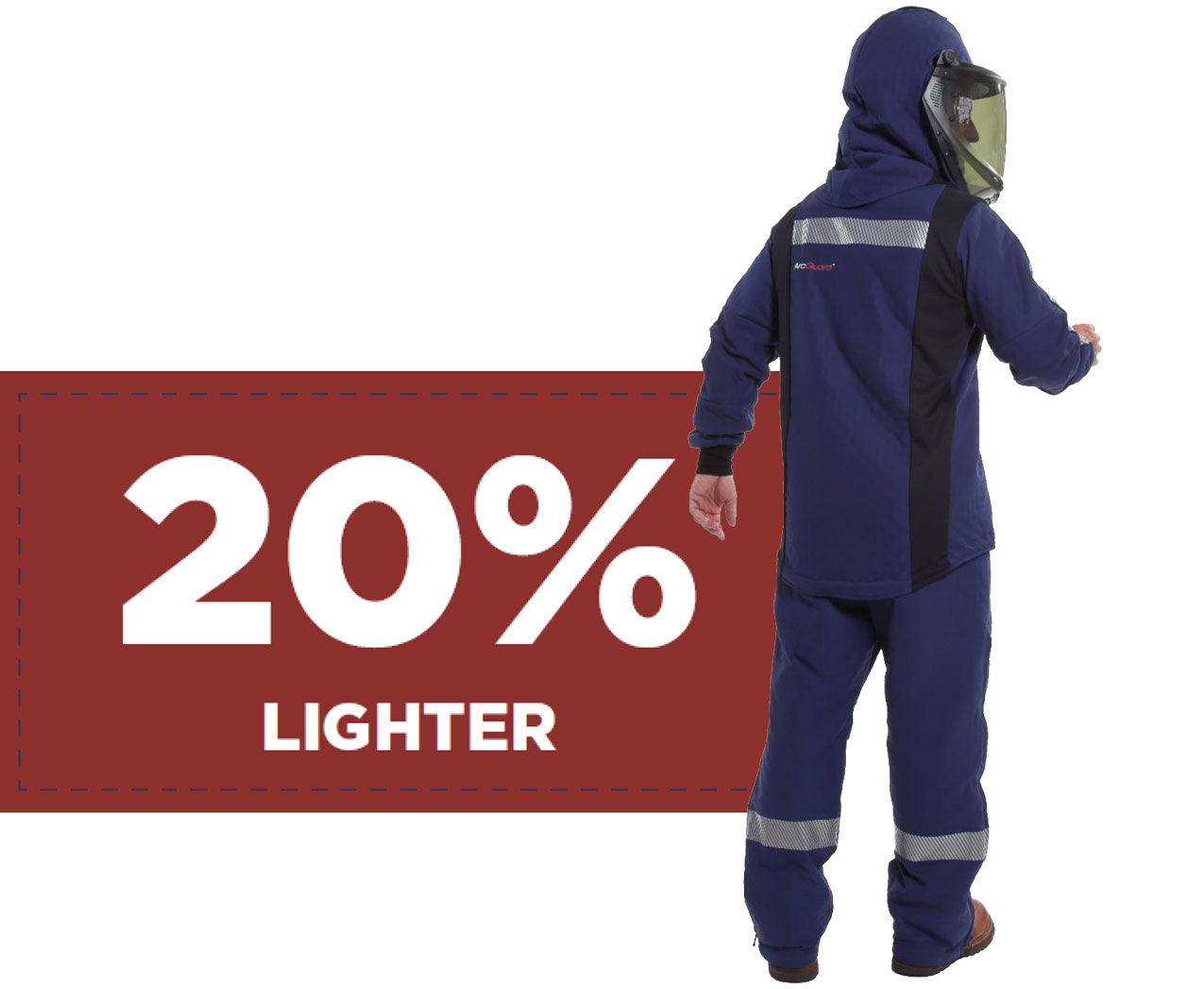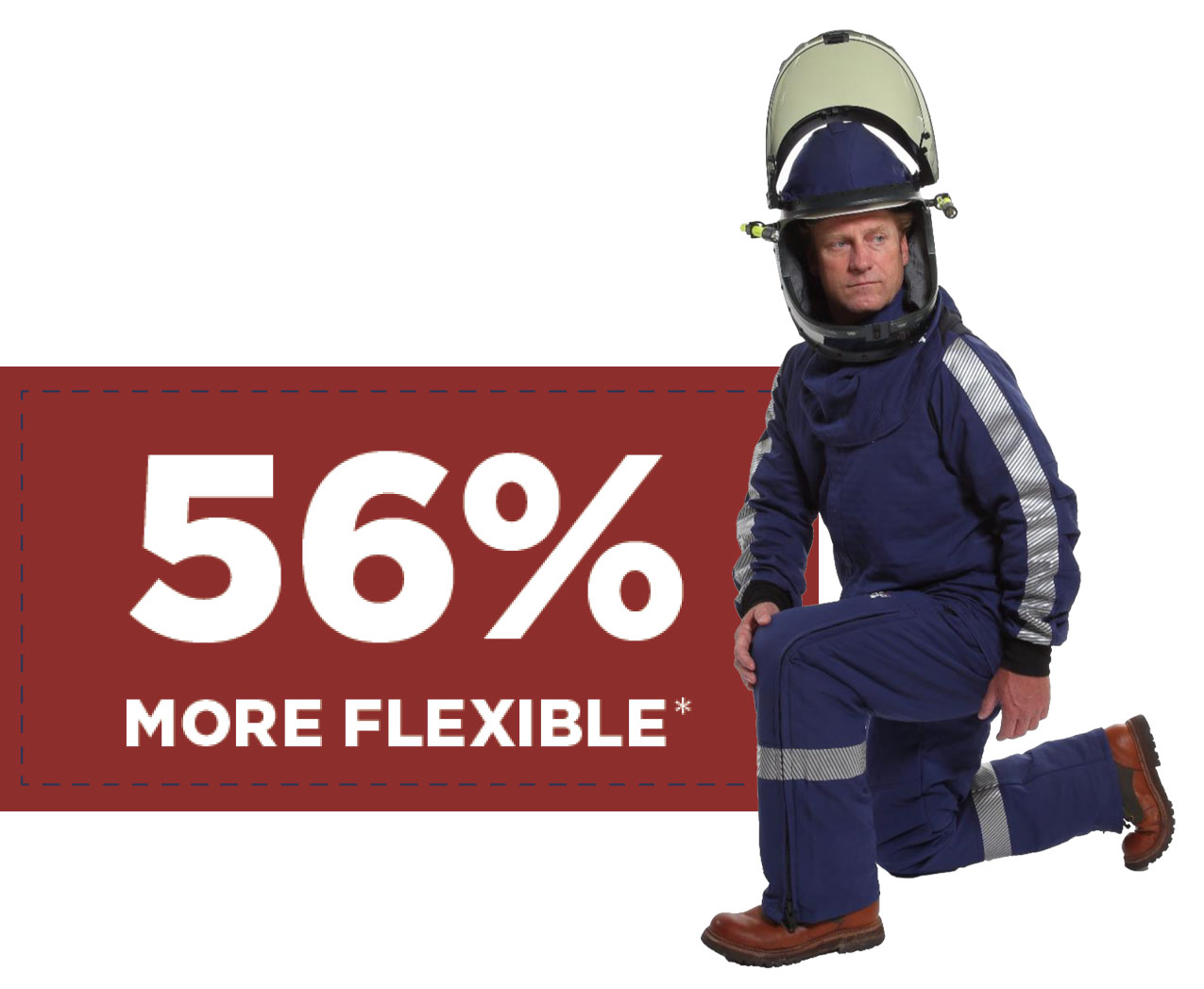Comfort Without Sacrificing Safety
Posted in Safety Tips
Comfort Without Sacrificing Safety
Finding FR safety apparel that also prevents heat stress

There's more to FR (Flame-Resistant) clothing than protecting against burns. Reducing the risk of injury is an important aspect of FR clothing, but there's another factor just as vital, ensuring it's worn properly.
Any protection is useless if not used correctly. Seat belts only save lives if they're used before an accident occurs. In the same way, FR clothing needs to be worn to benefit from its flame-resistant properties. But during the summer can you be sure workers are wearing FR clothing properly? If clothing feels comfortable when worn, people are more likely to wear it the way it was designed. On the other hand, if workers feel that they will overheat while wearing the FR safety apparel, they're less likely to wear it.
It's easy to call something comfortable, but what does that mean? Personal preference plays a big part in comfort, but there are some general truths. There are five main characteristics that clothing needs to be considered comfortable.
BREATHABILITY
Cleaning out a closed garage during the summer can be unbearable. The heat has nowhere to go, and the air is stagnant. Wearing clothing that isn't breathable can have the same effect. The excess heat can affect worker performance and contribute to heat-related illness. Breathable clothing feels better and can help increase production.
Everything about breathing suggests comfort. Taking deep breaths relieves stress and helps with concentration. Breathable clothing helps fight heat stress. Losing concentration is one of the many symptoms of heat stress. When hot air is trapped inside a garment, it impairs the body's natural ability to keep cool. This can lead to heat stress. According to Department of Health and Human Services (NIOSH) Publication No. 2010–114, "protective clothing… may increase the risk of heat-related illnesses." Heat-related ill-nesses include heat stroke, heat exhaustion and heat cramps.
Some symptoms of these heat-related illnesses are confusion, dizziness, nausea, and muscle cramps. These symptoms, and more, can affect worker efficiency. And worst of all, heat stress can result in permanent disability and death.
A survey reported by EHS Today indicated "uncomfortable" as the main reason for not being compliant with PPE. 40% of the survey-takers selected this reason. The breathability of apparel has a positive effect on comfort. This means wearing breathable clothing can lead to increased safety compliance.

ArcGuard Performance uses GORE® PYRAD® comfort science keeps wearer cooler, drier, more comfortable, and less restricted while working
A survey by EHS Today explained that "uncomfortable" was the main reason for not being compliant with PPE. But another reason offered also had to do with comfort. “Poor fitting” was the third most common response.
LIGHTWEIGHT
Heavy clothing can contribute to worker fatigue, leading to mistakes and lost productivity. Conversely, lightweight apparel can lead to optimal job performance of workers.
Carrying a tissue box uses very little energy compared to carrying a bowling ball. To a smaller degree, wearing a t-shirt requires less energy than wearing a winter coat. This might not feel significant for a short amount of time, but after 8 hours of work, it is substantial. Workers are more likely wear something lightweight rather than some-thing that weighs them down.
People tend to associate thickness with security. This is usually true if there's only one material. A 1” thick oak door is easier to knock down than a 3" thick oak door. If using different materials, the idea is often inconsistent. For example, a 1” thick steel door is more secure than a 3” thick oak door. Another attribute associated with strength is weight.

New ArcGuard® Performance 40 cal arc flash PPE featuring GORE® PYRAD® is the lightest weight 40 protection below 10oz. It has the highest arc rating per fabric weight ration and is 20% lighter than competitive premium products and more than 50% lighter than competitive entry level products.
MOISTURE-WICKING
Working up a sweat at work is sometimes unavoidable. Physical activity or high heat environments will cause most people to perspire. The trick with perspiration is figuring out how to control the after-effects. Wearing sweaty clothing is not very comfortable. Wet, sticky clothing restricts movement and slows down some activities. Perspiration is reabsorbed into the skin if it stays for too long. This can cause irritation and rash. Luckily, moisture-wicking fabric can combat these consequences. Perspiring is the body’s natural cooling process. Moisture-wicking clothing helps the cooling process.
The combined effect pulls moisture from the skin and to the fabric. Then, the moisture releases into the air. For example, materials like carbon fiber can dry 2-3 times faster than cotton, keeping the wearer and clothing dry. As moisture is released, it takes heat along with it, creating a natural cooling effect. This works with the body to assist in maintaining a healthy body temperature and reduces the chance of heat stress.
This is like breathability, except it relates to excess moisture, instead of stagnant air. Keeping workers dry keeps them more comfortable, but this goes beyond perspiration. The evaporative process helps regulate body temperature, making it more comfortable.
MAKING IT FIT
A survey by EHS Todayexplained that "uncomfortable" was the main reason for not being compliant with PPE. But another reason offered also had to do with comfort. “Poor fitting” was the third most common response.
Clothing needs to fit a worker no matter what movement they are performing. The size should be big enough that it doesn't restrict movement. At the same time, the size shouldn't be so loose-fitting that it gets in the way. Finding the perfect fit for all workers is sometimes difficult. It’s important to know who will be wearing the garment since male and female body builds are typically different. The good news is that women can now have work clothes that are designed with them in mind.

Flexible protective apparel is easier to work in and the ergonomically designed ArcGuard® Performance is 56% more flexible than other solutions. The latest GORE® PYRAD® technology and comfort science designed with features like added stretch panels at the shoulders for easy reaching and 26” leg zippers make it easy to pull on the bits over boots and pants.
DUAL HAZARD PROTECTION
Ideally, having materials that prevent heat stress shouldn't mean that workers aren’t protected from both Arc Flash and Flash Fire hazards. That’s why it’s a good idea to select materials that offer dual protections dual protection which can protect the safety of workers in many environments. If arc flash and flash fire hazards are both present, there's no need to switch apparel when switching tasks. If only one of the hazards is prevalent, the added protection is still reassuring. Selecting materials that are inherently flame-resistant means the protection is built into the fibers, so it won’t wear out or wash out if you follow laundry instructions.

ArcGuard Performance has several compliances; Arc Rating of 41cal/cm2, CAT 4, NFPA70E, CSA Z462, and OSHA 1910.269, and is 20% lighter, 48% thinner and 56% more flexible that competitive premium products. This arc suit is unlike any other, providing maximized comfort and freedom of movement complemented by the newest GORE® PYRAD® technology and comfort science.
NSA Boilerplate
National Safety Apparel’s vision is to provide innovative and high-quality safety apparel to our customers to get them home safely, day after day. Our house of brands has grown to include personal protective equipment (PPE) for flash fire and arc flash, cut protection, hi-vis work and foul weather gear, and our evolving, foundational thermal protection. If you'd like to learn more about NSA's FR resistant apparel and other products, contact your Arbill representative today.
Have a Safe Day!
